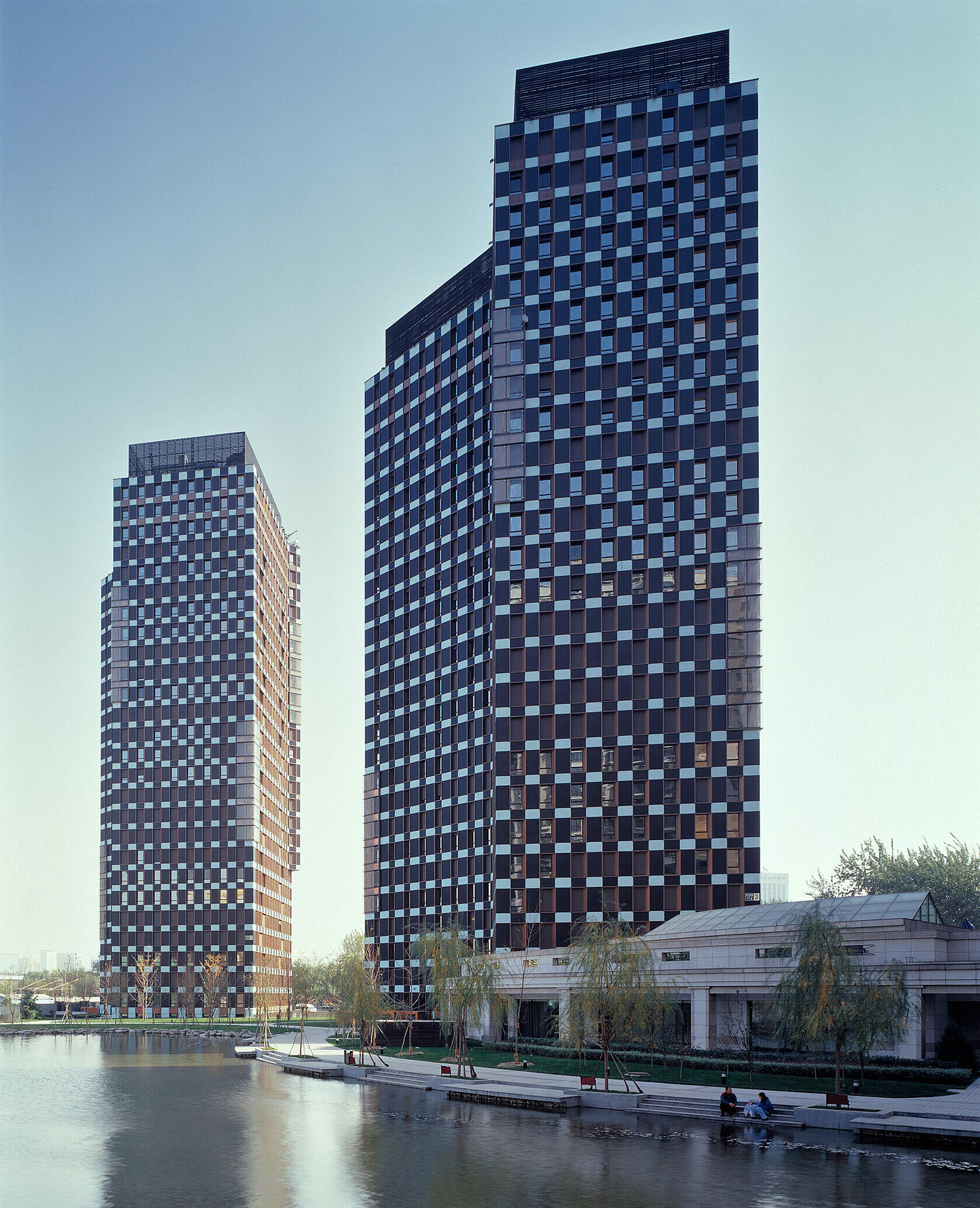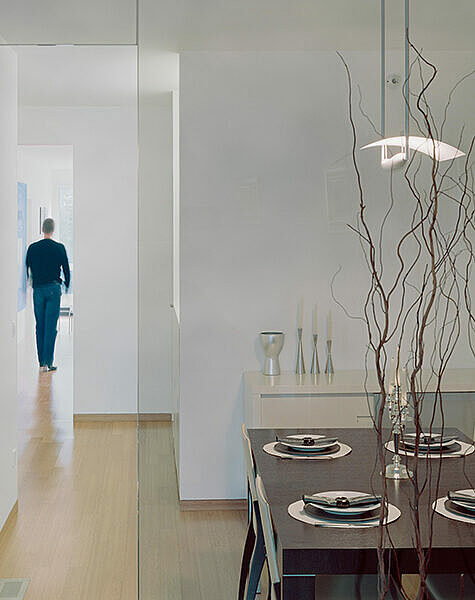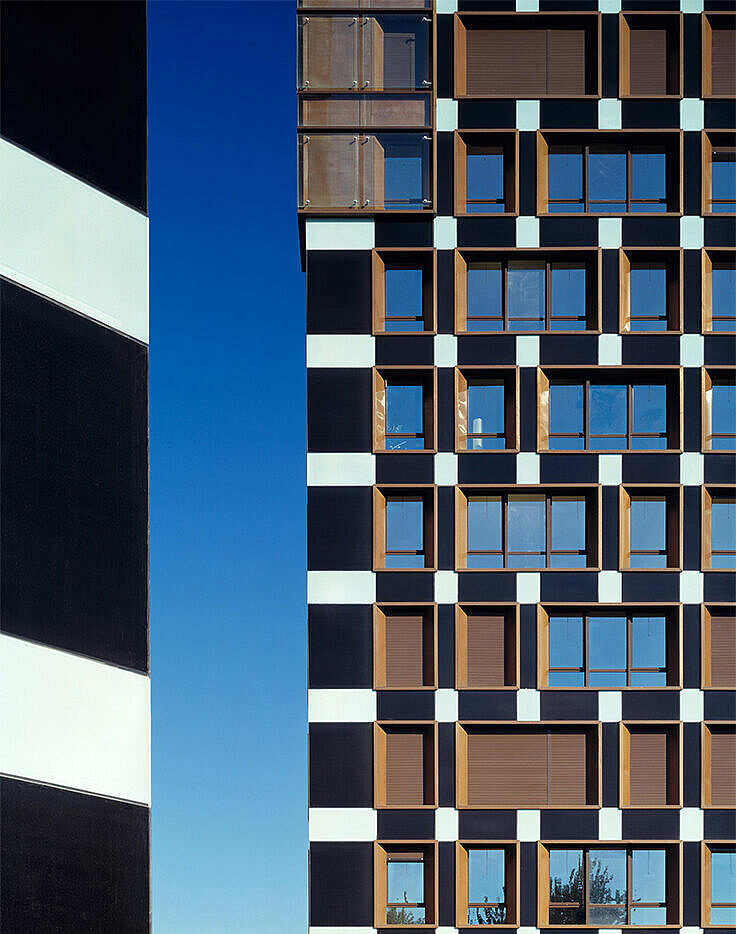More content
Residential

The remit here in this fast-growing district of Beijing, half way between the city centre and the airport, was to design two residential towers to slot into an existing master plan with predetermined heights and positions. Other requirements were architectural quality, an upmarket interior fit-out and energy optimisation and sustainability – a first in China at the time of building.
Despite the tight schedule, the result broke new boundaries in terms of sustainable, environmentally friendly building in Asia. It used tried and trusted techniques such as centralised ventilation control and heat recovery for the first time on a large-scale project in Beijing as well as implementing additional sustainability criteria including cultural acceptance and flexibility of use.
Green space meets urban density
Drawing on a Chinese tradition that sees the garden taking precedence over buildings, the two towers with their trapezoidal footprint were positioned at the edge of the extensive landscaped grounds. The “park” lends an ecological note in this dense urban space, the picturesque landscaped space contrasting with the strong geometric form of the buildings.
The towers themselves combine maximum comfort and minimum energy consumption. An active roof incorporating heating and cooling elements together with the ventilation control system guarantee a continuous supply of fresh air at constant room temperatures and humidity levels. Window reveals angled according to façade orientation provide optimum lighting in the individual apartments.
The 208 spacious 4- to 5½-bedroom apartments were fitted out with carefully chosen materials and a keen eye for detail. An ingenious floor plan system ensures high flexibility of use and lots of scope for furnishing.
A striking façade with a Chinese feel
The façade design, too, reveals local influences. The chequerboard pattern of the glass panels, underlaid with black and white, for example, is a reference to the Chinese principle of yin and yang, while red copper window surrounds provide another touch of colour. But these materials were also chosen with pragmatic factors in mind: at the time of building both glass and copper were comparatively inexpensive raw materials in China.

